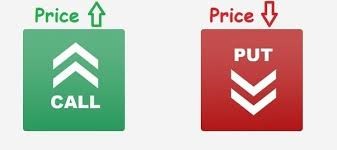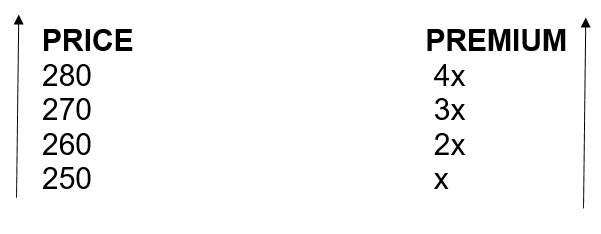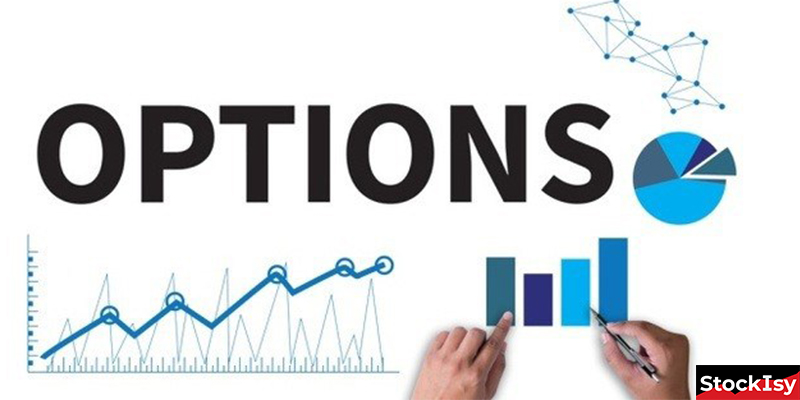DEFINITON:
“A stock option is a contract between two parties in which the stock option buyer (Holder) purchase the right (but not the obligation) to buy/sell 100 shares of an understanding stock at a predetermind price from /to the option seller (writer) within a fixed period of time.”
Nowdays, many investors portfolios include investments such as mutual funds, stocks & bonds. But the variety of securities you have at your disposal does not end there. Another type of security, known as option.
Option based on equities, more commonly known as ‘stock option’. Stock options are listed on exchange like the NYSE in the form of a quote. It is important to understand the details of a stock option quote before you make a move like the cost & expiration date.
Options are types of Derivatives security. They are derivative because the price of an option is instrinsically limited to the price of something else. Options are contracts that grant the right, but not the obligation to buy or sell an underlying asset at a set price on or before a certain date. The right to buy is called CALL OPTION & the right to sell is a PUT OPTION.
Option traders are self- directed investors, meaning they don’t work directly with a financial advisor to help manage their option trading portfolio. As a Do It Yourself (DIY) investor, you are in full control of your trading decisions & transactions. But that doesn’t mean you are alone.
There are plenty of communities that bring traders together to discuss things like current market outlook & option trading strategies.
ADVANTAGES OF OPTION TRADING
1. LEVERAGE
The main advantages of trading stock options than simple stock is the leverage involved. Options allow you to employ considerable leverage. Option enable you to control the shares of a specific stock without trying a large amount of capital in your trading account. The amount of capital (premium) that you are paying is a relatively small amount comparing to the cost of buying the same amount of stocks.
The capability to invest a smaller amount of capital & control the stock give the option trader the flexibility to:
- Trade higher priced stocks, the big moves, that are normally out of reach to the smaller account trader.
- Magnify profit when the stock moves in your favor.
- Make money based on a relatively small movement in the stock.
This is an advantage to disciplined traders who know how to use leverage.
2. PROFIT FROM BULL, BEAR & SIDE WAY MARKET
There are various options strategies that give the options trader the ability to make money from all market directions (up, down or side way market) with limited risk exposure & potentially unlimited profit.
A few examples are, buying call options when the market is bullish, buying put options when the market is bearish & entering into various credit spread strategies to earn profit when the market is range bound.
3. HEDGING AGAINST RISK
Stocks options can be used as an instrument to hedge against various risk exposure of stock holder. For example, If you are a holder of 1000 shares of IBM & suspect that the stock price might drop, instead of selling the shares to stay away from the uncertain future, you can simply buy 10 put options to protect your current position. It can be an inexpensive insurance to protect your stock portfolio from any adverse move in the market.
Disadvantages of Option
Trading
- Taxes. Except in very rare circumstances, all gains are taxed as short-term capital gains. This is essentially the same as ordinary income. The rates are as high as your individual personal income tax rates. Because of this tax situation, we encourage subscribers to carry out option strategies in an IRA or other tax-deferred account, but this is not possible for everyone. (Maybe you have some capital loss carry-forwards that you can use to offset the short-term capital gains made in your option trading).
- Commissions. Compared to stock investing, commission rates for options, particularly for the Weekly options, are horrendously high. It is not uncommon for commissions for a year to exceed 30% of the amount you have invested. Be wary of any newsletter that does not include commissions in their results – they are misleading you big time.
- Wide Fluctuations in Portfolio Value. Options are leveraged instruments. Portfolio values typically experience wide swings in value in both directions.
The most popular portfolio at Terry’s Tips (they call it the Weekly Mesa) gained over 100% (after commissions) in the last 4 months of 2010. The underlying stock for the Weekly Mesa is the S&P 500 tracking stock, SPY, one of the most stable of all indexes. Yet their weekly results included a loss of 31.3% in the last week of November (they have added an insurance tactic to make that kind of loss highly unlikely in the future, by the way). Three times, their weekly gains were above 20%.
Many people do not have the stomach for such volatility, just as some people are more concerned with the commissions they pay than they are with the bottom line results (both groups of people probably should not be trading options).
Option market are modified advance version of future contracts. In this lot size, margin & expiry are same as future. In option contract strike price is the is the price which we need to select while buying & selling. Premium – in option contract premium is the actual rate which we need to pay while buying or selling of option. Different strike price has different premium. Option market is difficult to understand in starting but as we trade practically lot of things get clear.
THERE ARE TWO MAIN CLASSES OF OPTION MARKET:

1. CALL OPTION

DEFINITION:
“Call options are an agreement that give the option buyer the right, but not the obligation, to buy a stock, bond, commodity or other instrument at a specified price within a specific time period. The stock, bond or commodity is called the underlying asset.”
When we think that original price of a particular stock is going to go up & we are bulling on the particular stock then we buy Call Option.
Eg: SBIN EQ price = 250 and * is its premium.

If we buy 250 strike price option at X rate then will be its premium. And as and when the original price of the stock goes up the premium rate also goes up & we come in profit.
But if we have bought call option & original price of the stock comes down then the premium also comes down & we are in loss. Call option buyers is known as Option Holder & call option seller is known as Option Writer.
Eg: In rent agreement or sale deed buyer is known as option buyer & seller is known as option seller.
Call option buyer is Bullish or Positive on the market & call option writer is Bearish or Negative on the market.

Buyer & seller have to decide strike price. Buyer pays premium to seller & premium is non-refundable. Call option buyer buys premium from seller at the strike price which he has selected & he can ask delivery of shares from the seller. Taking delivery is purely depended on buyer, it is not compulsion. If call option buyer ask delivery to call option seller then it is compulsion to give shares to call option buyer.
Now let’s look at a example of call option buyer & call option seller.
SBI Equity cmp (current market price) = 250
Buy SBI 260 call Exp 24nov2016 @5 (Buyer A)

Sell SBI 260 Call Exp 24Nov2016 @5 (Seller B)

In above example Buyer A & seller B have a trade of call option, 260 is the strike price & Rs.5 is its premium.
BUYER A:
Buyer A feels that before expiry rate of SBI will go above Rs.260 in which he intends to earn profit & he pays a premium of Rs.5. And if till expiry if SBI rate is 3000 then following is the profit to buyer.

Buyers got a profit of Rs.35 & the lot size of SBI is 3000 so 1,05,000/-
Total profit = 35 * 3000 = 105000 Rupees
And at expiry if SBI is below 260 then he will have a loss of Rs.5
Total loss = 5 * 3000 = 15000
Total loss of Rs.15000/- will happen.
SELLER B:
If seller B thinks that SBI will be below 260 & he should be in profit he will buy the premium paid buys the buyer of Rs.5. So seller B is in profit as follows.

Therefore call option buyer as limited loss & unlimited profit & option seller has limited profit & unlimited loss.
MEANS CALL OPTION BUYER OF LOSS LIMITED & PROFIT UNLIMITED THEREFOF OPTION SELLER OF PROFIT LIMITED & LOSS UNLIMITED CAN BE DONE.
Value of an option (premium)
Premium = Intrinsic value + time value/ (Intrinsic price)
For call option intrinsic value = equity price – strike price
For example 250 this equity price is & we 240 that strike price takes then
Call option intrinsic value = 250 – 240 = 10
Put option intrinsic value = strike price – equity price
Strike Price For Call Option:

Time value:
More the expiry more time value is there & as expiry comes to near time value decreases. At expiry time value become 00.

Premium Depends Upon:
- Underlying value (means equity price)
- Strike price
- Time for expiry
- Volatility (possibility)
- Higher the price, Higher the premium.
- Higher the strike price, Lower the premium.
- Greater the time for expiry, Higher the premium.
- Higher the volatility, Higher the premium.
TIPS:
- Premium is already defined; we don’t need to calculate the same. So please don’t sit & calculate the premium.
- All option contracts are executed automatically on expiry.
- Option buyer has to pay premium so his maximum loss is his premium. Similarly option sell has to pay 10-20% margin so his loss is his margin paid to broker.
| Call option buyer (Holder) | Call option seller (writer) |
| Bullish | Bearish |
| Pay premium | Receives premium |
| Max profit unlimited | Max profit is premium received |
| Max loss is premium paid | Max loss is unlimited |
| Margin not required | Margin required for sell call option |
- PUT OPTION
Definition:
“A put option is an option contract giving the owner the right, but not the obligation to sell a specified amount of an underlying security at a specified price within a specified time frame. This is the opposite of a call option, which gives the holder the right to buy an underlying security at specified price, before the option expires.”
All things of PUT options are all opposite of call option. when we think that the price of a particular share is going to go down then we buy PUT.
For Eg SBIN Eq (Equity) price= 250 &* is the premium for it

As and when the price of share starts declining more & more we start making profit. And as and when the price of the share starts increasing more & more we start making losses.

Put option buyer gets benefits when market falls & put option seller gets benefits when market goes up.
For Example – L&T EQ. price 1500 (CMP)

And consider that price of L&T comes to 1300 at expiry then


Value
- Put option buyer has has limited risk= premium paid &
Unlimited profit
- Potential as price decreases, Put Option Seller has limited profit i.e.
- Premium received & bears unlimited losses if price decreases, so 10 to 20% margin required to sell put option.
- Option premium for in the money is more & option premium for out of the money is less.
| Put option buyer (Holder). | Put option seller (Writer). |
| Bearish. | Bullish. |
| Pays premium. | Received Premium. |
| Max profit unlimited. | Max profit is premium received. |
| Max loss is premium paid. | Max loss unlimited. |
| Margin not required to buy (only premium). | Margin required to short put option (premium not required). |
